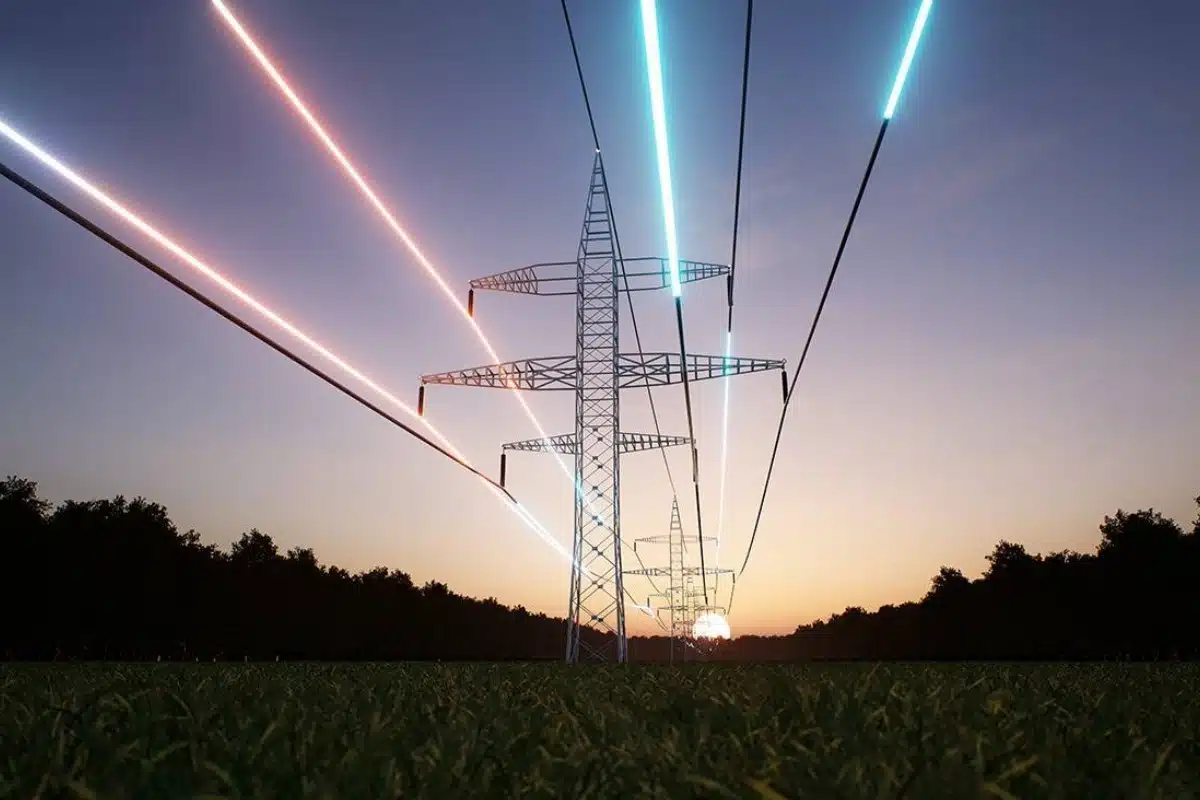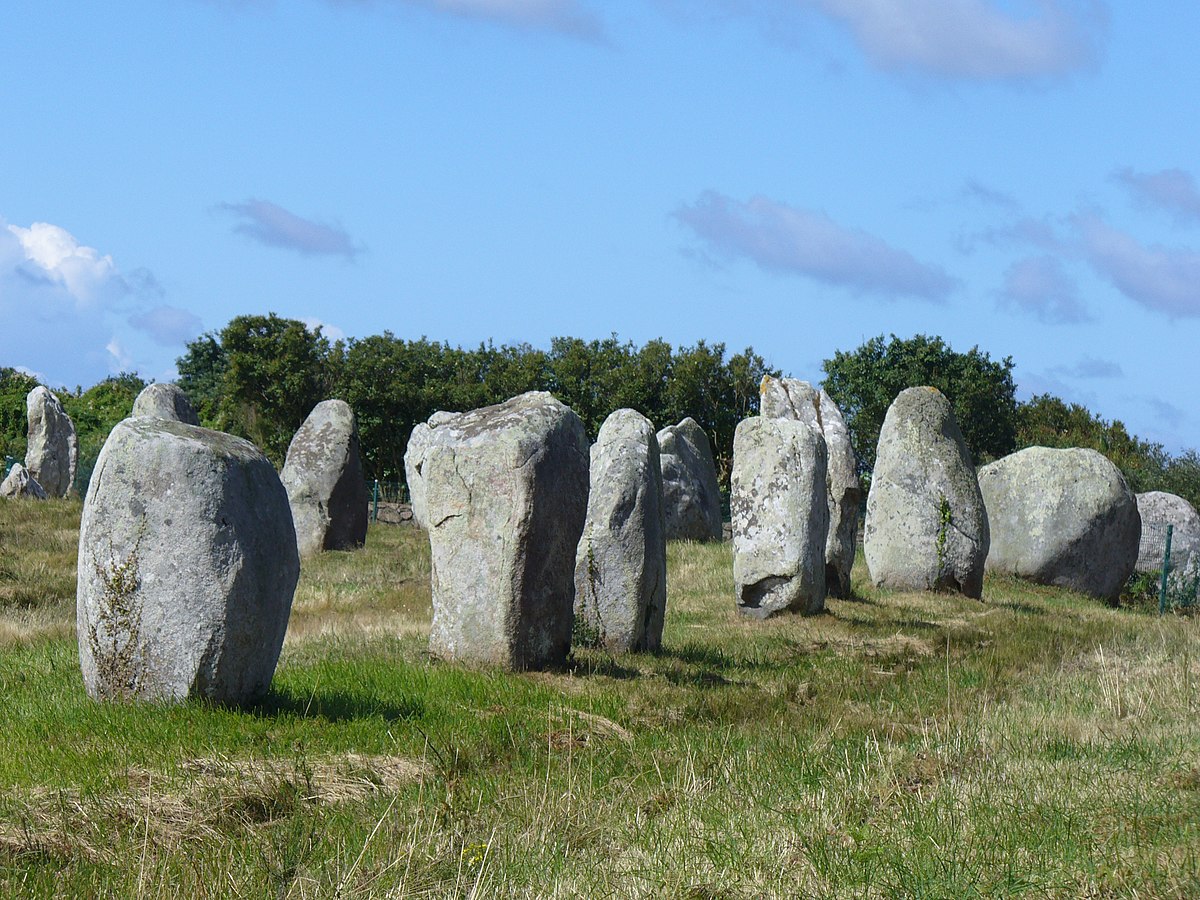Throughout history, civilizations have recognized invisible energy pathways crisscrossing our planet. These mysterious alignments, known as ley lines, have captivated researchers, spiritual seekers, and curious minds for centuries.
From ancient monuments to modern energy work, the concept of planetary energy networks continues to intrigue those who sense there’s more to our world than meets the eye. Whether you’re a skeptic or a believer, the patterns emerging from these alignments raise fascinating questions about how our ancestors understood Earth’s subtle energies and how we might harness them today.
🌍 What Are Ley Lines and Where Did This Concept Originate?
The term “ley lines” was coined in 1921 by British amateur archaeologist Alfred Watkins, who noticed that ancient sites across the British landscape appeared to align in straight lines. While photographing the Herefordshire countryside, Watkins experienced what he described as a “flood of ancestral memory,” suddenly perceiving a network of straight tracks connecting prehistoric sites, standing stones, and sacred places.
Watkins initially proposed these were physical trade routes used by ancient peoples for navigation and commerce. He documented his findings in his influential book “The Old Straight Track,” meticulously mapping alignments between churches, hillforts, stone circles, and other archaeological landmarks. His work sparked a movement that would eventually expand far beyond his original practical interpretation.
In the decades following Watkins’ discovery, the concept evolved significantly. By the 1960s and 1970s, the New Age movement reinterpreted ley lines as channels of Earth’s electromagnetic or spiritual energy rather than simple pathways. This transformation connected ancient wisdom traditions from around the world, including Chinese feng shui concepts of dragon lines and Aboriginal Australian songlines.
The Global Network: Famous Ley Lines Around the World
Researchers and enthusiasts have identified numerous significant ley line alignments spanning continents. These connections between sacred sites suggest either intentional ancient planning or remarkable coincidence, depending on your perspective.
The St. Michael Line
One of the most documented ley lines in Britain runs from St. Michael’s Mount in Cornwall to Hopton-on-Sea in Norfolk. This alignment passes through numerous sites dedicated to St. Michael and St. George, including Glastonbury Tor, Avebury, and several ancient churches. The line follows the path of the sunrise on May Day (Beltane), suggesting astronomical significance.
The Great Pyramid Alignment
The Giza Pyramid complex sits at the intersection of the longest land parallel and the longest land meridian, a geographic position that some researchers find remarkably precise. Additionally, the three pyramids align with Orion’s Belt, demonstrating the ancient Egyptians’ sophisticated understanding of celestial patterns and possibly Earth energies.
The European Apollo-Athena Line
This massive alignment connects sacred sites across Europe at a precise angle, including Delphi in Greece, the Acropolis, Delos, and extending to Skellig Michael in Ireland. All these sites were considered powerful spiritual centers in their respective cultures, raising questions about shared ancient knowledge.
⚡ The Science Behind Earth’s Energy Fields
While mainstream science remains skeptical of metaphysical ley line theories, legitimate electromagnetic phenomena do exist within and around our planet. Understanding these measurable forces provides context for energy network concepts.
Earth generates a magnetic field through the movement of molten iron in its outer core. This magnetosphere protects us from solar radiation and guides migrating animals across vast distances. Birds, sea turtles, and even some bacteria possess magnetoreception abilities, sensing these invisible fields for navigation.
The Schumann resonances represent another documented phenomenon—electromagnetic frequencies generated by lightning strikes resonating between Earth’s surface and the ionosphere. The fundamental frequency of approximately 7.83 Hz falls within the range of human brain alpha waves, leading some researchers to suggest biological connections to planetary electromagnetic activity.
Geological Conductivity and Underground Water
Some ley line researchers point to geological features as explanations for perceived energy. Underground water flows, mineral deposits, and fault lines create measurable electromagnetic variations. Dowsers have traditionally located water sources using these subtle signals, though the mechanism remains scientifically controversial.
Certain rock formations, particularly those containing quartz or other crystalline structures, can generate piezoelectric effects when subjected to pressure. Ancient builders may have intuitively recognized sites with unique geological properties, choosing them for monuments and temples.
🏛️ Ancient Architecture and Energy Alignment
The precision with which ancient civilizations positioned their most important structures continues to astound modern researchers. These alignments suggest sophisticated knowledge that transcended individual cultures.
Stonehenge demonstrates remarkable astronomical alignment, with its stones positioned to mark solstices and lunar cycles. The massive effort required to transport and erect these stones implies the site held extraordinary importance. Whether this relates to ley line energy, astronomical observation, or ritual significance remains debated.
Mayan pyramids throughout Central America align with celestial events and frequently position along straight lines connecting multiple sites. The pyramid at Chichen Itza creates a serpent shadow during equinoxes, demonstrating intentional solar alignment. These cultures clearly possessed advanced understanding of cycles and positioning.
Sacred Geometry and Energy Flow
Many ancient structures incorporate specific mathematical ratios and geometric patterns believed to optimize energy flow. The golden ratio, Fibonacci sequences, and platonic solids appear repeatedly in sacred architecture worldwide. Proponents suggest these proportions create resonance with natural energy patterns.
Gothic cathedrals exemplify this principle with their soaring arches, precise proportions, and strategic placement. Many were built atop earlier pagan sites, suggesting continuity in recognizing energetically significant locations. The architectural designs may have served acoustic purposes, creating specific vibrational environments for spiritual practice.
Detecting and Experiencing Ley Line Energy
For those interested in personally investigating these phenomena, several traditional and modern methods exist for detecting potential energy lines and vortexes.
Dowsing and Divination
Dowsing with rods or pendulums remains the most common traditional method for detecting earth energies. Practitioners claim these tools amplify subtle electromagnetic signals or subconscious awareness. While scientific validation remains elusive, many experienced dowsers demonstrate consistent results.
The technique involves walking an area while holding L-shaped rods or a pendulum, observing changes in their movement. Crossings where multiple energy lines intersect supposedly create stronger responses. Many ancient sites show strong dowsing reactions, though skeptics attribute this to ideomotor effects—unconscious muscle movements.
Electromagnetic Field Meters
Modern technology offers more objective measurement possibilities. EMF meters, originally designed for electrical safety, can detect variations in electromagnetic fields. Some investigators use these devices at suspected ley line locations, documenting anomalies and patterns.
Magnetometers provide even more precise readings of magnetic field variations. Archaeological surveys use these instruments to locate buried structures, but energy researchers employ them to map potential earth energy patterns. Consistent anomalies at traditional sacred sites warrant further investigation.
Physiological and Intuitive Sensing
Many people report distinct physical or emotional sensations at certain locations—tingling, pressure changes, heightened awareness, or profound peace. While subjective, these experiences occur commonly enough to merit consideration. Some individuals appear more sensitive to environmental energies than others.
Meditation and quiet observation at suspected power spots can enhance awareness of subtle energies. Practitioners recommend spending extended time at locations, noting any sensations, thoughts, or emotional shifts. Keeping detailed journals helps identify patterns across multiple visits.
🔮 Harnessing Ley Line Energy for Personal Practice
Beyond academic interest, many spiritual practitioners work deliberately with perceived earth energies for healing, meditation, and personal transformation. These practices draw from various traditions while adapting to contemporary understanding.
Locating Power Spots Near You
Identifying energetically significant locations in your area begins with research. Historical sites, natural features like springs or distinctive rock formations, and places where ancient peoples gathered often mark potential power spots. Local historical societies and indigenous knowledge holders can provide valuable insights.
Create your own maps by noting locations where you feel particularly energized, peaceful, or connected. Over time, patterns may emerge showing personal energy lines—places where your individual resonance aligns with earth energies. These subjective maps hold value for personal spiritual practice even without external validation.
Energy Work and Meditation Practices
Once you’ve identified a promising location, structured practices can deepen your connection with earth energies. Grounding exercises establish energetic roots, allowing safer and more stable work with powerful forces. Standing or sitting meditation while visualizing connection to planetary energy networks features prominently in many traditions.
Specific techniques include:
- Chakra alignment meditation at energy vortex sites to balance personal energy centers
- Barefoot walking to increase direct contact with earth electromagnetic fields
- Sound work using voice, drums, or instruments to create resonance with location frequencies
- Crystal gridding to amplify or direct subtle energies according to sacred geometry principles
- Seasonal celebrations at astronomically aligned sites to honor natural cycles
Creating Sacred Space in Your Environment
You don’t need to visit famous monuments to work with earth energy principles. Applying sacred geometry, intentional design, and awareness of natural energy flow can transform any space into a personal power spot.
Feng shui offers systematic methods for optimizing energy flow in homes and workplaces. While originating from Chinese tradition, many principles align with broader earth energy concepts. Clearing clutter, positioning furniture along natural sight lines, and incorporating natural materials all support healthy energy circulation.
The Skeptical Perspective: Critical Analysis of Ley Line Claims
Intellectual honesty requires acknowledging the significant skepticism surrounding ley line theories. Understanding criticisms strengthens rather than weakens genuine inquiry into these phenomena.
Statisticians point out that with enough points on a map, alignments inevitably emerge through pure chance. The “Texas sharpshooter fallacy”—drawing the target after shooting—describes this problem. Critics argue ley line researchers select sites that fit predetermined patterns while ignoring those that don’t.
Archaeological consensus attributes most ancient site placements to practical factors: defensive positions, water access, agricultural potential, and existing settlements. The spiritual or energetic significance, while culturally important, may have been secondary to survival needs.
No peer-reviewed scientific studies have conclusively demonstrated the existence of ley line energy as distinct from known electromagnetic phenomena. Dowsing tests under controlled conditions typically fail to show abilities beyond chance. These failures don’t disprove earth energy concepts but highlight the challenge of applying scientific methodology to subjective experiences.
🌟 Bridging Ancient Wisdom and Modern Understanding
Rather than viewing ley line theories and scientific skepticism as opposing forces, a more nuanced perspective recognizes value in both approaches. Ancient peoples possessed profound observational knowledge of natural patterns, even if their explanatory frameworks differed from modern science.
Indigenous cultures worldwide maintained sophisticated relationships with landscape that modern society is only beginning to appreciate. Songlines in Aboriginal Australian culture encode geographical, mythological, and practical information into narrative form, creating mental maps of vast territories. These systems worked effectively for tens of thousands of years.
Contemporary earth science reveals increasing complexity in planetary systems. The magnetosphere fluctuates with solar activity, affecting everything from auroras to power grids. Underground water flows create measurable electrical currents. Fault lines store and release tremendous energy. Ancient site builders may have intuitively recognized manifestations of these forces.
The Psychology of Sacred Space
Even if ley lines exist primarily as cultural constructs rather than physical phenomena, their psychological and social functions deserve recognition. Places designated as sacred create containers for transformation, community bonding, and connection with something greater than individual existence.
The act of pilgrimage to special sites—whether motivated by belief in earth energies or simple historical appreciation—provides benefits regardless of underlying mechanisms. Modern psychology recognizes that ritual, intention, and environmental cues significantly impact mental states and wellbeing.
Environmental Consciousness and Planetary Connection
Perhaps the most valuable aspect of ley line exploration lies in fostering deeper connection with our planet. In an era of environmental crisis, practices that encourage awareness of earth as a living system—whether literally or metaphorically—serve important functions.
Viewing landscapes as interconnected energy networks rather than resources for exploitation can shift consciousness toward sustainability. Recognizing sacred sites as worthy of protection preserves archaeological treasures and natural beauty for future generations. These perspectives complement scientific conservation efforts with emotional and spiritual motivations.
Indigenous land management practices, often developed alongside earth energy beliefs, frequently demonstrate ecological sophistication. Controlled burns, seasonal harvesting, and biodiversity maintenance systems sustained healthy ecosystems for millennia. Reconnecting with these wisdom traditions offers practical solutions to modern environmental challenges.
🌐 The Future of Earth Energy Research
As technology advances, new possibilities emerge for investigating mysterious aspects of ley line phenomena. Sophisticated sensors, satellite imaging, and data analysis techniques could reveal patterns invisible to earlier researchers.
Interdisciplinary collaboration between archaeologists, geophysicists, consciousness researchers, and traditional knowledge holders may yield breakthroughs. Rather than dismissing ancient wisdom or accepting it uncritically, respectful dialogue can identify which aspects align with measurable phenomena and which serve primarily symbolic or psychological functions.
Citizen science projects increasingly contribute to earth energy research. Individuals document experiences, measurements, and observations at thousands of locations worldwide, creating databases that may eventually reveal significant patterns. This crowdsourced approach democratizes investigation while generating substantial data.
Integrating Ley Line Awareness Into Daily Life
Regardless of whether ley lines exist as objective physical phenomena or subjective cultural constructs, integrating this awareness can enrich daily experience. Simple practices cultivate deeper connection with place and planet.
Begin by developing relationship with your immediate environment. Notice how different locations make you feel. Observe where you naturally gravitate for relaxation, inspiration, or contemplation. These personal power spots deserve acknowledgment and care.
Study your region’s history and indigenous heritage. Understanding how earlier peoples related to the landscape provides context and enriches appreciation. Many locations hold significance you might otherwise overlook—battlefields, ancient trails, ceremonial grounds—each with stories to tell.
Practice gratitude and reciprocity with the land. Whether you conceptualize this as energetic exchange, environmental stewardship, or simply good manners, treating the earth with respect benefits all beings. Small acts like picking up litter, supporting conservation, or planting native species strengthen your connection.
💫 Beyond Belief: The Personal Journey
Ultimately, ley line exploration represents a personal journey of discovery that transcends simple belief or disbelief. The questions these mysterious alignments raise about human consciousness, ancient knowledge, and our relationship with the planet invite each person to investigate directly.
Your experiences at sacred sites, dowsing attempts, or meditation practices provide data points more meaningful than any external authority. Trust your perceptions while maintaining healthy skepticism. The truth likely encompasses elements currently beyond our understanding, requiring humility from both believers and skeptics.
The real power of ley lines may lie not in measurable energy flows but in their ability to awaken wonder, encourage exploration, and remind us that much remains mysterious about our beautiful, complex planet. In reconnecting with these ancient pathways—whether physical, energetic, or symbolic—we reconnect with something essential about being human.
As you continue exploring these planetary energy networks, remember that the journey itself transforms. Each sacred site visited, each moment spent in quiet observation, each attempt to sense subtle energies builds your relationship with the living earth. That relationship, grounded in respect and curiosity, may be the greatest treasure these mysterious alignments offer.
Toni Santos is a visual researcher and educational designer specializing in tactile learning tools, exploring how hands-on, sensory experiences can illuminate ancient construction techniques, lost technologies of early civilizations, sacred geometries and earth alignments, and mysterious energy sources. Through embossed maps, textured models, and handcrafted manipulatives, Toni investigates how physical interaction deepens understanding, memory, and creativity, while uncovering the subtle ways these tools convey knowledge across cultures and ages. Blending design theory, educational psychology, and archival research, Toni curates case studies, visual explorations, and instructional resources that celebrate the craft, innovation, and cognitive power of touch-based learning, inviting educators, designers, and curious minds to engage with the hidden patterns and energies that have shaped human history.




